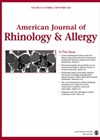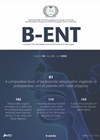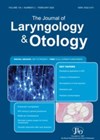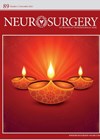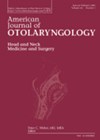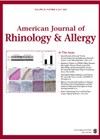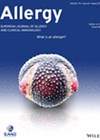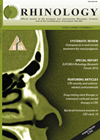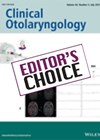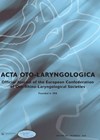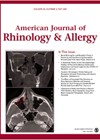
Journal Reviews
Serum biomarkers for CRSwNP
This cross-sectional comparative study looked at 50 patients with nasal polyps who, at the time of diagnosis, also had a blood test evaluating serum total IgE, IL-17 and Pentraxin-3. The study assesses whether these blood markers are useful in the...
Olfactory function and vitamin D
This Turkish prospective study evaluated olfactory function in individuals with primary vitamin D deficiency and the effect of replacement therapy on olfactory function over an eight-month period in 2019. A total of 91 individuals with vitamin D insufficiency were included,...
Olfactory and gustatory recovery in coronavirus patients after six months
It remains unclear for how long olfactory and gustatory losses persevere in patients with COVID-19. This is a prospective study of 300 patients who lost taste and smell within seven days of contracting COVID-19. The patients were objectively assessed with...
Are there any benefits of postoperative antibiotics after endoscopic transsphenoidal surgery for pituitary tumours?
This prospective randomised double-blind multicentre study evaluated whether postoperative antibiotics resulted in improvement in sinonasal quality of life (QoL) compared to placebo in patients undergoing endoscopic endonasal transsphenoidal pituitary surgery. A total of 461 patients were screened for the study...
A new era in the treatment of recalcitrant nasal polyps?
Chronic rhinosinusitis with nasal polyps (CRSwNP) can be difficult to treat effectively in patients with aggressive or recalcitrant disease. Omalizumab (Xolair) is a monoclonal anti-IgE antibody with proven benefits for patients with moderate/severe asthma and CRSwNP, but this study looks...
How safe is sinonasal surgery for the operating surgeon in times of COVID-19?
I’m sure we have all wondered how safe we are in the operating theatre from virus circulating in the room and therefore the risk of subsequent COVID-19 infection. The authors addressed this by measuring the airborne particle concentrations in the...
Olfactory disorders in COVID-19
This Turkish prospective longitudinal observational study evaluated olfactory disorders (OD) and recovery processes in patients with COVID-19 infection at three time points within the first month of diagnosis: time of diagnosis with positive PCR test; time of first negative PCR...
Biologicals for severe chronic rhinosinusitis with nasal polyps. Any use?
Recent advances and knowledge of inflammatory endotypes of chronic rhinosinusitis with nasal polyps (CRSwNP) led to introduction of biological agents such as monoclonal antibodies targeting IgE (omalizumab) and Interleukins (ILs) such as IL4R alpha (dupilumab) and IL5. The European Academy...
When should revision FESS leave you reaching for the script pad?
This very interesting work from the professorial team in London seeks to define a group of patients with CRSwNP who may benefit from early biological treatment since they are at risk of failure of surgical and conventional medical management. Approximately...
Remote consultations: bringing ENT in to the 21st century
The ongoing peaks and troughs of the COVID-19 pandemic have imposed unprecedented challenges on day-to-day healthcare provision that we all took as given across the globe prior to spring 2020! The pandemic has, in many ways, made us push boundaries...
Which factors affect the postoperative CSF leak following endoscopic skull base surgery?
Endoscopic skull base surgery is being increasingly performed worldwide for skull base tumours. Common indications include pituitary tumours, rathke cleft cysts, chordomas, craniopharyngiomas and olfactory neuroblastomas. The most common and important complication following endoscopic skull base surgery is postoperative CSF...
CRS vs. migraine: which is the culprit in most headaches?
‘Sinus headache’ is a common diagnosis according to patients and primary care physicians, but relatively infrequent in the eyes of otolaryngologists. This study examines 104 patients with a primary headache syndrome (PHS) and 130 patients with CRS, looking at SNOT-22...

